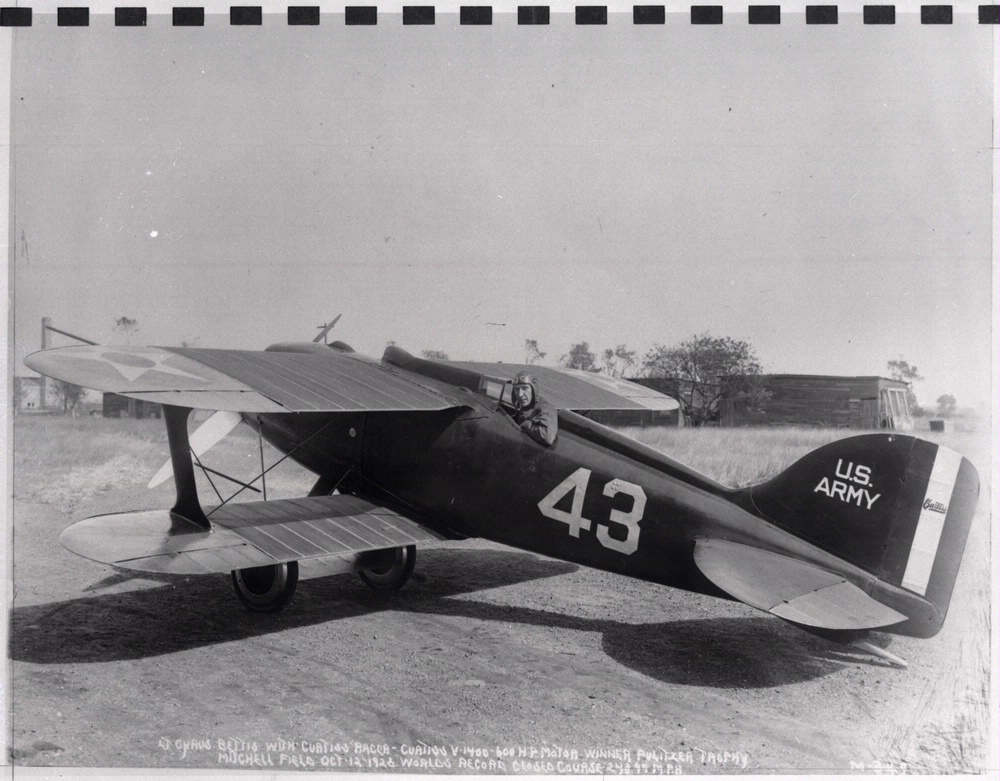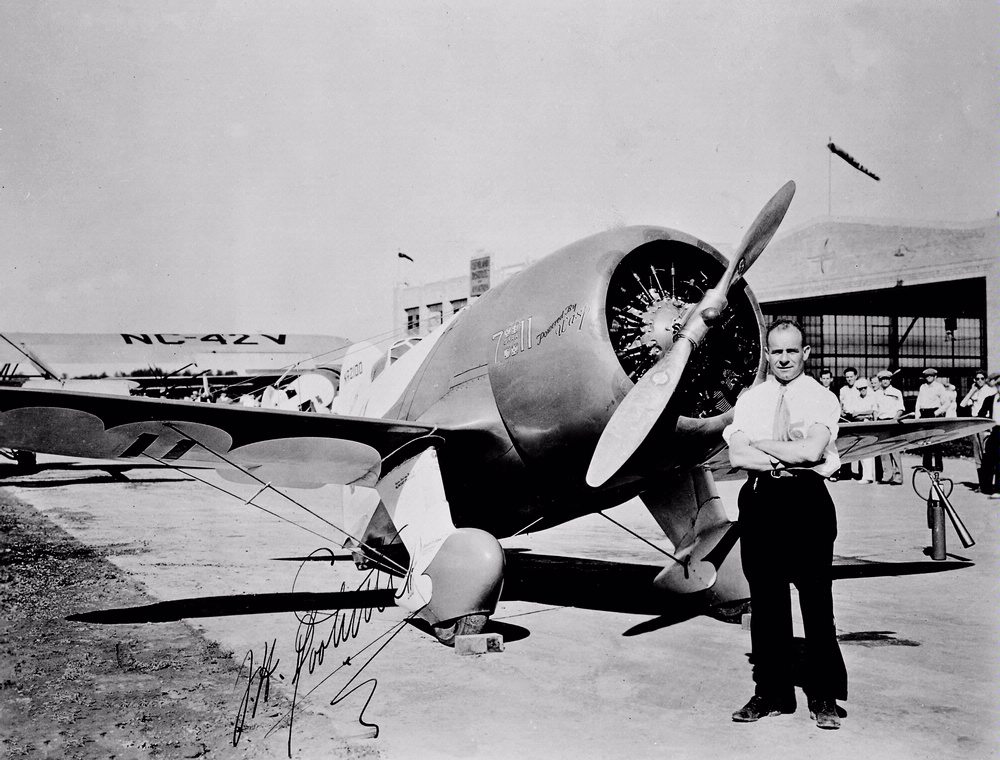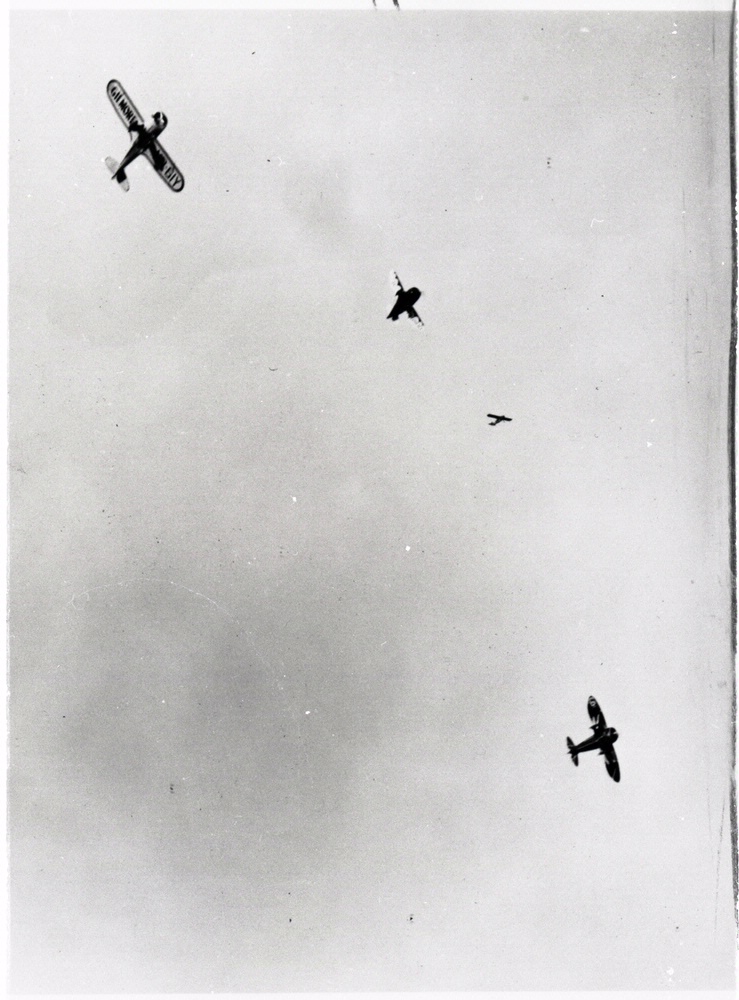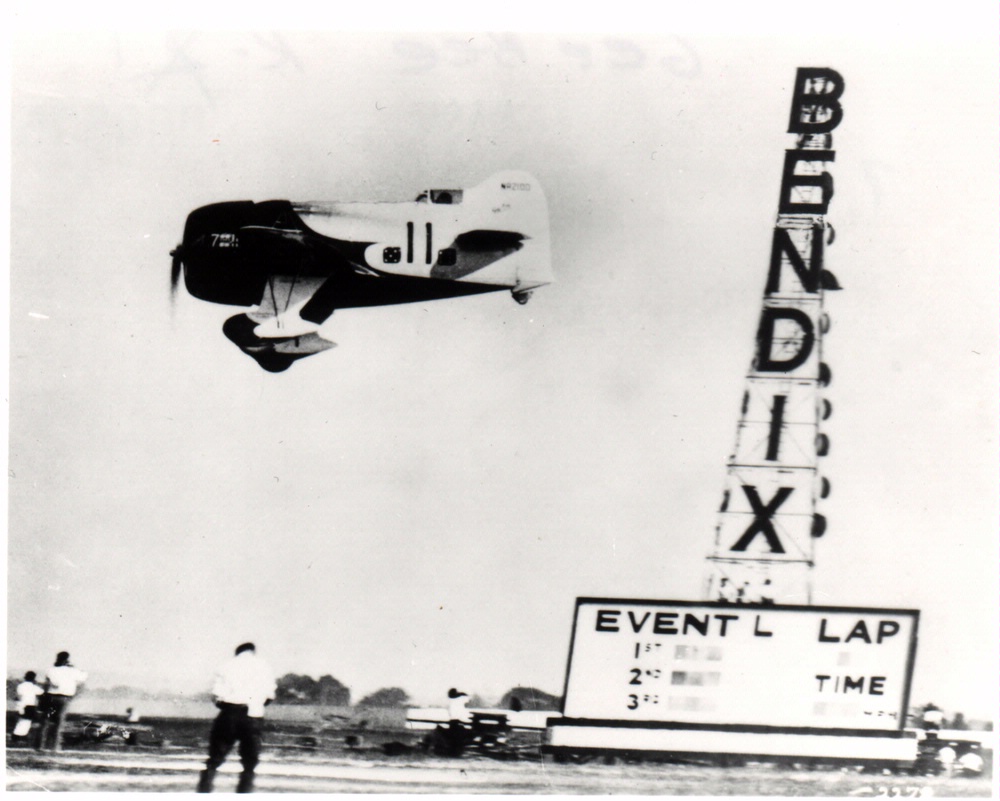National Air Races
The two marquee events of the National Air Races were the Thompson Trophy closed-course race and the Bendix Trophy transcontinental race. A new generation of daredevil pilots joined Jimmy Doolittle to make air racing and speed an increasingly popular aspect of American culture.

The Pulitzer Trophy Race
The Pulitzer Trophy Race was the marquee event of the National Air Races in the early 1920s. The annual races were meant to be the high point of the air racing year, much as the Indianapolis 500 was for auto racing enthusiasts.
U.S. Army Air Service Lt. Cyrus K. Bettis won the 1925 Pulitzer Trophy Race flying the Curtiss R3C-1 racer. The airplane, the same one displayed in this gallery, was designated R3C-1 when equipped with wheels and R3C-2 when equipped with floats.
Bettis and the R3C-1 were the world’s fastest pilot and airplane in 1925. About the Pulitzer Race he said, “My plane was not traveling like the wind; it was traveling faster than any wind in history.”

Having won the Schneider, Bendix, and Thompson Trophy races, Jimmy Doolittle had become one of the greatest pilots in air racing history. He retired from racing at the height of his success after his Thompson win. He had begun to doubt the continuing value of air racing in terms of advancing technology versus the lives it cost.







